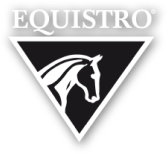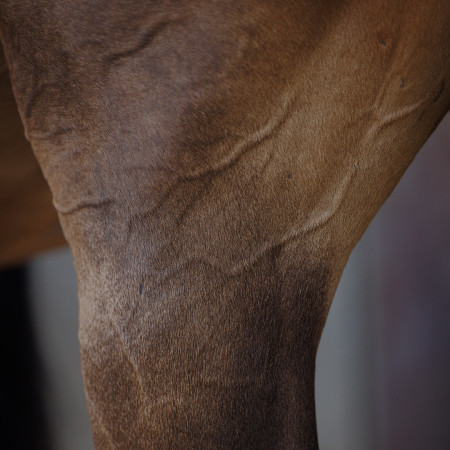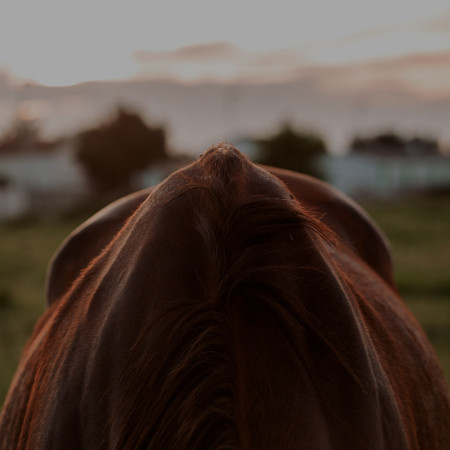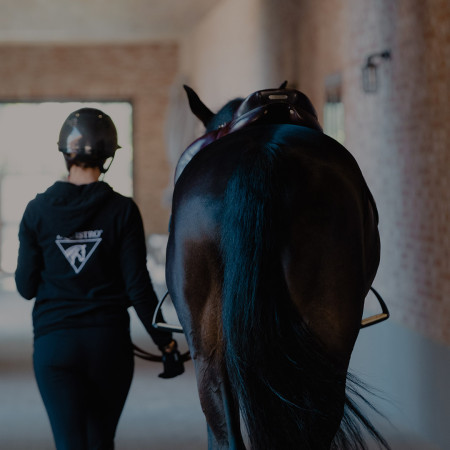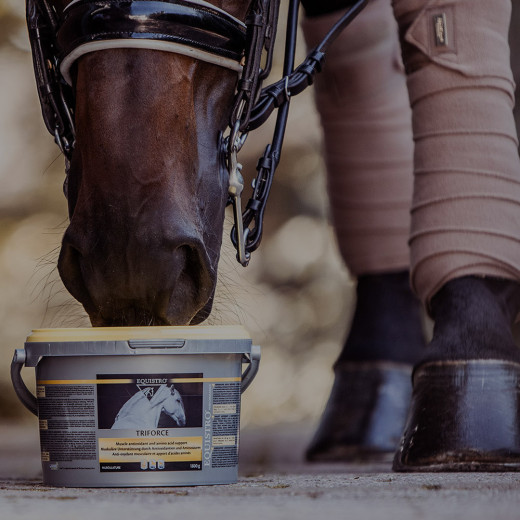
5 tips for growing muscles in horses
1. Natural movement is the name of the game
The development of muscle is supported in the best way by the natural movement of the horse in the pasture. It is not only muscles that are worked with this kind of natural movement, but also tendons, ligaments, and joints, and in a manner that the rider of a horse is unable to produce. This does not just greatly help to stabilize the connective tissue of the locomotor system but also has a positive, balancing effect on equine mentality if horses are permitted to follow their natural behavior with plenty of movement. Turning horses out to grass should therefore not be limited to “solitary confinement” in the paddock but must cater for all needs according to a horse’s nature: food (grass), companions (social behaviour), sufficient space (horses should be able to gallop freely for at least 40 metres).
2. What counts is a balanced diet
Whether during extensive training, following pauses due to injury, with breaking-in or advanced age: The reason for the targeted development of muscles should also significantly influence a horse’s diet, as the maintenance and build-up of muscle mass strongly depends on the composition of daily diet. The key factor involved here are so called essential proteinogenic amino acids. As basic building blocks for muscle development, they must be contained in a horse’s feed in sufficient quantities. But it is not the amount of protein that is critical, but the quality – so the amount of raw protein in the feed is not always the main factor but the percentage of pre-cecal digestible protein. If essential, muscle building amino acids are not available in adequate pre-cecal digestible levels in the feed (at least 80% should be a must), they cannot be used for building up muscles and are more harmful for the gut bacteria and the liver metabolism of the horse. Feed should thus be adjusted to the fitness and health status of each horse, according to the conditions in which it is kept, current weather (horses do not have the same nutrient requirements in summer and winter), the specific characteristics of the breed and of course the training objectives.
3. Mastering all terrain
Cross country riding (preferably in a group for an increased motivation in the horses) is highly recommended in many regards for ensuring equine fitness. Besides varied fitness training uphill and downhill, an activity that is excellent for developing muscle strength, different types of terrain also help to make horses more sure-footed, e.g., forest ground, sandy paths, tree roots, jumping over natural obstacles or patches of water. With frequent variations in terrain, blood flow is supported by the hoof mechanism through constant changes in the shape of the horn of the bulb of the heel, acting like a sort of muscle pump. In addition, many exercises from dressage or western-style equestrianism are excellent for training specific groups of muscles on suitable ground. Frequently riding horses in open terrain allows them to become more confident and thus strengthen their nerves as well.
4. Miracles possible with gymnastication
Groundwork, Groundwork, and in particular training with cavaletti (either on the lunge or ridden), have proved to be highly effective when it comes to warm-up and stretching muscles, above all those of the back. It is not without reason that riders like Olympic and European champion Ingrid Klimke rely on lectures involving cavaletti work. “Working on the lunge with cavaletti is perfect for training qualities in the horse such as suppleness and coordination to an optimum,” comments Klimke. She adds, “Training with cavaletti strengthens the muscles, improves expression and sense of rhythm and encourages the horse to think for itself and work independently. Cavaletti exercises on a curved line are above all good for training suppleness of the rib section, length bending and understepping of the inside hind leg.”
5. Aqua-training for strength and fitness
It is not essential to buy an aqua trainer to apply this method for strengthen muscles and the locomotor system as it is often possible to make use of such equipment at veterinary clinics, or physiotherapy facilities. Rivers, lakes, ponds and of course the sea are also excellent for under-water limb training exercises. For gradual muscle development the first step is to start the horse off walking through shallow water (reaching to around the carpal/hock joints) for a period of 10-15 minutes. Training can then be extended to include faster gaits and higher water levels depending on the individual training objective (strength and endurance or selective strengthening of specific muscle areas). It is important that the horse does not tense up (particularly where the back is concerned) as this could do more damage than good. Something that also makes a nice change for horse (and rider) is to let the horse swim with its entire body immersed in the water on hot days. This enables the horse to exercise all muscles without having to bear its full weight. Aqua training is thus also an excellent method for rehabilitation following sports injuries.
Dr. med. vet. Caroline Fritz
